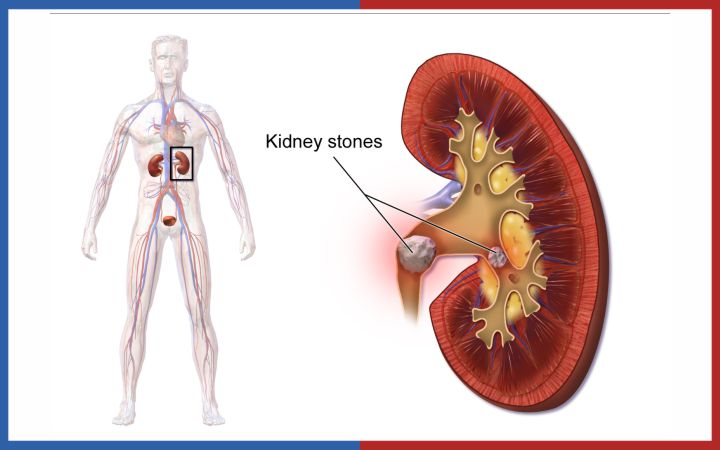
Kidney stones are hard deposits made from minerals such as calcium or waste products such as uric acid. They start small, but they can grow bigger as more minerals stick to them.
Some kidney stones often pass on their own without treatment. Other stones that are painful or that get stuck in your urinary tract sometimes need to be removed with surgery.
There are three main techniques for kidney stone surgery, and the choice of technique depends upon multiple factors, including the size and type of stone, medications you may be taking, your other medical problems and patient preference. Read on for a description of each technique.
Types of Kidney Stone Procedures and Surgeries
These four treatments can be used on your kidney stones:
- Shock wave lithotripsy
- Ureteroscopy
- Percutaneous nephrolithotomy or percutaneous nephrolithotripsy
- Open surgery
Shock Wave Lithotripsy
SWL is the most common kidney stone treatment. It works best for small or medium stones. It's noninvasive, which means no cuts are made in your skin.
During this procedure, you lie on a table. You'll get medicine beforehand to limit any pain or discomfort.
The doctor uses an X-ray or ultrasound to find the stone (or stones) in your kidney. Then, she aims high-energy shock waves at your kidney from the outside. These waves go through your skin and break up the stone into small pieces.
Ureteroscopy
This procedure treats stones in the kidneys and ureters. Your doctor uses a thin, flexible scope to find and remove stones. No cuts are made in your skin. You'll sleep through this procedure.
Percutaneous Nephrolithotomy or Percutaneous Nephrolithotripsy
If your stone is large or lithotripsy doesn't break it up enough, this surgery is an option. PCNL uses a small tube to reach the stone and break it up with high-frequency sound waves.
You will be given something so that you won’t be awake during this surgery. Your surgeon will make a small cut in your back or side and place a thin scope into the hole.
Open Surgery
Open surgery is rarely done for kidney stones anymore. But if your stone is very large or it can't be removed or crushed with other treatments, surgery might be an option.
Surgery may also help if:
- One of the stones is stuck in your ureter.
- You're in a lot of pain.
- The stone is blocking your urine flow.
- You're bleeding or you have an infection.
You will be given something to make you unconscious during the procedure. The surgeon will make a cut in your side and into your kidney. She will remove the stone through the opening. A stent is placed in the ureter to help urine drain.
